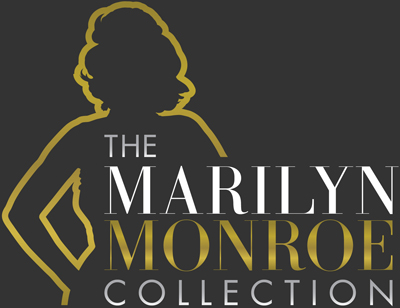I was contacted recently by Caitriona Palmer regarding an interview on Marilyn Monroe (of course) and the recently published book “The Secret Life of Marilyn Monroe” by Randy Taraborrelli. Palmer writes for the Irish Independent News.
I’ve not read the book by Taraborrelli (though I’ve already read several reviews and have heard from many others that it leaves much to be desired) and therefore really couldn’t comment on any of the questions specific to the book. However, as always, I was happy to chat about Marilyn and the impact I believe she’s had on popular culture across the world. The entire article is posted below, and can be found online here.
She has been dead for nearly 50 years but the spectre of Marilyn Monroe continues to haunt bookshelves and best- seller lists across America. Ever since she died of a drug overdose in 1962, the iconic actress has been immortalised in pop culture mythology as America’s ultimate — but most tragic — beauty.
Since her lonely death at the age of 36, hundreds of books and articles have been penned about her life and loves. Scores of documentaries have dissected every detail of her three failed marriages and her chronic dependency on drugs. And an entire memorabilia empire worth millions of dollars has risen in her wake.
And yet, despite this deluge of information, the public still wants more.
A new book heralded as yet another “definitive biography” about the enigmatic actress has just hit bookshelves in America, promising readers “explosive” new details about Monroe’s life, particularly her alleged affair with slain president John F Kennedy.
Written by celebrity biographer J Randy Taraborrelli, The Secret Life of Marilyn Monroe claims to uncover new details about Monroe’s tortured relationship with her mentally ill mother and her troubled childhood and adolescence.
The book also alleges that celebrated singer Frank Sinatra — who enjoyed an on-off romance with the Some Like It Hot actress in the early 1960s — could have saved Monroe’s life had he not thrown her out of his house less than two weeks before her death amid fears she might die in his company.
This week, Taraborrelli’s book was ranked eleventh on the New York Time’s prestigious bestseller list.
However, some of America’s most prominent book critics expressed disappointment with the biography, pointing out that Taraborrelli had failed — despite his claims — to reveal any previously hidden gems about Monroe’s life.
“One reads doggedly through more than 500 pages of text and appendices hoping for some flash of insight, something to justify all the hours Taraborrelli spent cobbling this together, but not once does such a moment arrive,” wrote veteran Washington Post book critic Jonathan Yardley in one withering attack.
“Someone who knows nothing about Monroe’s life and legend will find the essential facts here, but no pleasure is to be derived from Taraborrelli’s recital of them.”
But to millions of people across the world, it scarcely matters what salacious details each new book on Monroe brings. For those who celebrate the actress as the enduring epitome of feminine beauty, sexuality and vulnerability, her legacy has lost none of its appeal.
“Marilyn set the standard for beauty in the 1950s and early 1960s, and she still sets the standard today. We often hear about starlets and celebrities being compared to Marilyn. Her look and style are imitated in red-carpet fashions and photoshoots,” Scott Fortner, a recognised expert on Marilyn Monroe and one of the world’s leading collectors of Monroe memorabilia, told the Weekend Review.
“It’s amazing to think that this superstar from 50 years ago still reigns as one of the most beautiful women in history.”
Taraborrelli, who in the past has written biographies about Madonna, Jackie Kennedy and Elizabeth Taylor, based his research on extensive interviews with many close associates of Monroe, including some of the secret service agents assigned to protect JFK in the 1960s. In addition, he accessed previously unseen files, including unpublished interviews and notes from 1950s reporters.
For a public with a seemingly insatiable appetite for salacious details about the starlet’s life, the book offers alleged details about Monroe’s relationship with JFK.
In previous biographies it was said that Monroe and the late president enjoyed an intimate and lengthy affair that spanned several months but according to Taraborrelli, “what Marilyn really shared with JFK was either one or two nights of probable passion”.
In one of the book’s more revealing passages, Taraborrelli writes how the president asked Monroe for her telephone number at a dinner party thrown by his sister Patricia Kennedy Lawford, and her Hollywood actor husband, Peter Lawford, in New York in February 1962.
According to Taraborrelli, JFK called Marilyn the very next day and invited her to meet him at the home of Bing Crosby in Palm Springs a month later.
At that meeting in Palm Springs, “there was no question in my mind that Marilyn and the President were together. They were having a good time. She’d had a lot to drink. It was obvious they were intimate and that they were staying there together for the night,” said Philip Watson, a Los Angeles executive interviewed by Taraborrelli.
A secret service agent assigned to protect Kennedy that weekend confirmed the liaison to Taraborrelli but denied that the affair continued after Palm Springs.
“What we knew was that JFK and Marilyn had sex at Bing Crosby’s, and that’s it. We didn’t think it was a big deal. He had sex with a lot of women. She was just one of many and it wasn’t that noteworthy,” the agent said.
“If there was more to it between them, they somehow managed to keep it from us — and I don’t think you can keep something like that from the secret service.” But the affair was set to have terrible consequences. By this stage, Monroe was deeply unstable. Addicted to a cartload of potentially deadly narcotics, she had taken to injecting herself with barbiturates, a cocktail she laughingly referred to as her “vitamin shots”.
Obsessed with her weight, she was relying on colonic irrigation for weight loss, often enduring multiple enemas in order to fit into a favourite dress
Drugged and unresponsive in the mornings, her make-up artist Allan Snyder would begin applying her make-up while she lay groggily in bed. “There was no other way,” he said in the book. “It would take her so long to get up.”
While the President filed his tryst with Monroe as “another notch — albeit an impressive one — on his bed stand” says Taraborrelli, the actress sunk further into a deep depression.
Seventeen days after the Palm Springs weekend, Monroe was found semi naked and “almost dead” in a drug-induced coma in her Brentwood home in Los Angeles.
A close associate of Monroe told Taraborrelli exactly what had gone wrong. “JFK. That’s what was wrong. She’d just been jilted by the president of the United States. It was Kennedy. That’s why. Kennedy.”
Four months later, she was dead. Her housekeeper found Monroe lifeless and prone on her bed clutching her telephone in her right hand. Over 15 pill bottles stood on her night stand.
Over time, despite the ruling of death by drug overdose, countless conspiracy theories would abound about whether her death was suicide or murder.
Since that day, Monroe has been regularly listed as one of the top 10 earning celebrities who are no longer alive, earning more in death than during her life.
For Fortner, who has been collecting Monroe memorabilia all his life — and who now owns, among others, the silk cape she wore to James Dean’s East of Eden premiere in 1955 — the actress’s rags-to-riches struggle remains her enduring legacy.
Her touching vulnerability and tragic demise may explain, says Fortner, why so many people continue to be fascinated by Monroe and why they still line up to buy books about her life.
“She continues to hold such a fascination in the hearts and minds of the public worldwide because people are intrigued with the Marilyn Monroe legend,” said Fortner.
“She had a difficult childhood, and worked hard to become an actress. She was the biggest star of her lifetime. Her life ended tragically and too soon, and the mystery surrounding her death is still discussed and often hotly debated.
“We all want to know the truth, but probably never will. It keeps us interested.”









